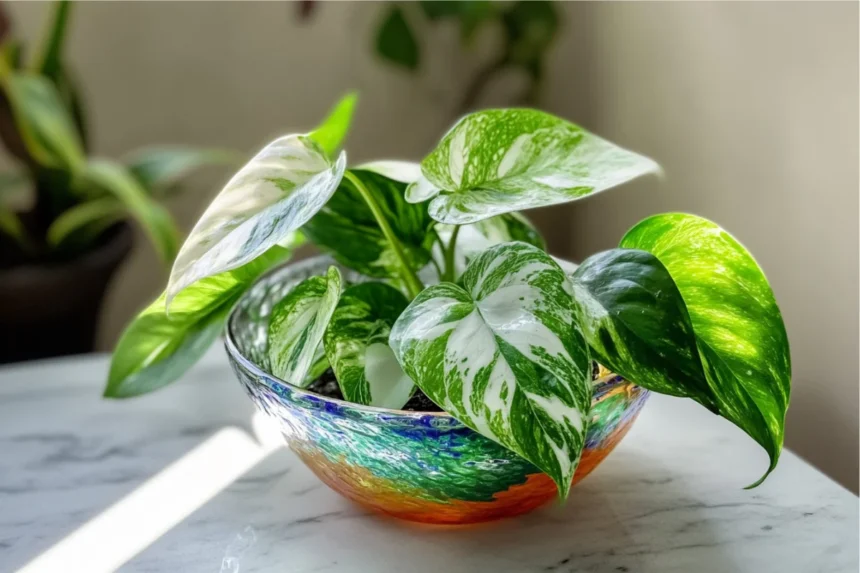Looking to elevate your indoor plant collection with a stunning yet low-maintenance option? The Snow Queen pothos is a must-have! With its striking white and green variegated leaves, this pothos variety is perfect for creating a vibrant yet calming atmosphere. Often mistaken for the Marble Queen pothos, the Snow Queen’s distinct, highly variegated white leaves set it apart.
But before you bring this beauty home, remember: like all pothos plants, the Snow Queen is toxic to pets and humans if ingested.
Key Facts at a Glance
- Common Name: Snow Queen Pothos
- Botanical Name: Epipremnum aureum ‘Snow Queen’
- Light: Bright, indirect light
- Soil: Moist, well-draining mix
- Watering: Allow soil to dry between waterings
- Toxicity: Toxic to pets and humans
- Native Region: Asia
Snow Queen Pothos Care Essentials
Light
While Snow Queen pothos can tolerate low light, its variegation thrives in bright, indirect light. Too little light can dull its vibrant white patches, while too much direct sunlight may scorch the delicate leaves. For optimal results, find a balance with filtered sunlight or place the plant near a bright window.
Soil
This plant needs a well-draining yet moisture-retentive mix. A blend of ⅔ potting soil and ⅓ perlite works wonders. Avoid compacted soils, as they can hinder root health over time.
Watering
Allow the soil to dry out between waterings. Drooping, soft leaves combined with dry soil signal it’s time to hydrate your plant. Snow Queen pothos is forgiving and can bounce back even if you occasionally forget to water.
Temperature and Humidity
As a tropical plant, Snow Queen pothos thrives in warm, humid environments. Aim for temperatures between 65–85°F. While average household humidity is sufficient, adding a humidifier or placing the plant in a bathroom can enhance its growth.
Fertilizer
Feed your Snow Queen monthly during spring and summer with a balanced liquid fertilizer. Pause feeding during fall and winter when the plant enters dormancy.
Pruning & Propagation
Pruning
To keep your Snow Queen lush and compact, prune leggy vines once a year. Pruning encourages bushier growth near the base. Trim yellowing leaves or propagate cuttings to grow new plants.
Propagation Steps
- Use clean scissors to cut a stem with at least one node (a small bump where roots will form).
- Remove lower leaves to expose the node.
- Place the cutting in water with the node submerged.
- Change the water weekly and wait for roots to grow (1–2 inches).
- Once rooted, plant in well-draining soil and keep the soil evenly moist for 1–2 weeks.
Common Issues & Solutions
Browning Leaves: Likely due to underwatering or low humidity. Adjust watering frequency and consider increasing humidity.
Yellow Leaves: Often caused by overwatering, low light, or natural aging of leaves near the base. Check for root rot or relocate to a brighter spot.
Curling Leaves: A sign of underwatering. Give your plant a thorough drink, and it should recover.
Loss of Variegation: Insufficient light causes the white variegation to fade. Gradually move your plant to a brighter area to restore its beauty.
FAQs About Snow Queen Pothos
Is Snow Queen pothos rare?
Not rare, but it’s less common than varieties like Golden or Marble Queen pothos.
How is Snow Queen different from Marble Queen pothos?
Snow Queen features predominantly white leaves with green specks, while Marble Queen has creamier variegation with more green.
Why does Snow Queen pothos grow slowly?
The high variegation reduces chlorophyll, making it slower-growing compared to greener varieties like Golden pothos.







